Documents
This section features public documents and files uploaded by the stakeholders and custodians of the Caspian Sea environment.
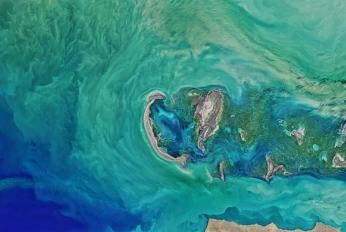 The interrelationship between the fisheries and the protection of the marine environment of the Caspian SeaSat, 21/12/2024 - 16:49This scoping paper considers the interrelationship between the fisheries and the protection of the marine environment of the Caspian Sea. It has been prepared in response to the request of the Parties to the Convention on the Protection of the Marine Environment of the Caspian Sea, during the first meeting of Conference of
The interrelationship between the fisheries and the protection of the marine environment of the Caspian SeaSat, 21/12/2024 - 16:49This scoping paper considers the interrelationship between the fisheries and the protection of the marine environment of the Caspian Sea. It has been prepared in response to the request of the Parties to the Convention on the Protection of the Marine Environment of the Caspian Sea, during the first meeting of Conference of
- Description
This scoping paper considers the interrelationship between the fisheries and the protection of the marine environment of the Caspian Sea. It has been prepared in response to the request of the Parties to the Convention on the Protection of the Marine Environment of the Caspian Sea, during the first meeting of Conference of the Parties in May 2007 in Baku.[1] The aim of the scoping paper is to support the Parties in their efforts to intensify their regional dialogue and to build their regional partnership for safeguarding the marine environment of the Caspian Sea for the benefit of present and future generations.
[1] Statement of Ministers at the first Meeting of the Conference of the Parties to the Framework Convention for the Protection of the Marine Environment of the Caspian Sea, 25 May 2007, Baku, Republic of Azerbaijan.
- Attached documents
- Metadata
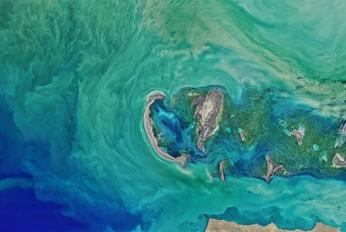 Threats to Biodiversity - Studies and findings of CEP II StudiesSat, 21/12/2024 - 16:41There is a widespread perception that the Caspian is in a state of ecological decline, and that one aspect of this is a decline in biodiversity. This is of particular concern, due to the status of the Caspian as a unique water body inhabited by a large number of endemic species. There is also a widespread belief that the C
Threats to Biodiversity - Studies and findings of CEP II StudiesSat, 21/12/2024 - 16:41There is a widespread perception that the Caspian is in a state of ecological decline, and that one aspect of this is a decline in biodiversity. This is of particular concern, due to the status of the Caspian as a unique water body inhabited by a large number of endemic species. There is also a widespread belief that the C
- Description
There is a widespread perception that the Caspian is in a state of ecological decline, and that one aspect of this is a decline in biodiversity. This is of particular concern, due to the status of the Caspian as a unique water body inhabited by a large number of endemic species. There is also a widespread belief that the Caspian is very sensitive to the impacts of industrial activities and in particular to those associated with oil and gas production and transportation.
- Attached documents
- Metadata
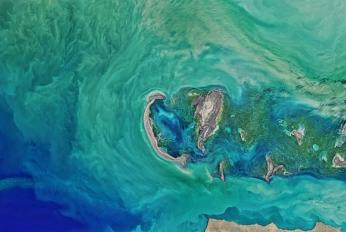 Casual Chain Analyses (CCA): Decline in tulka fisherySat, 21/12/2024 - 16:15There no evidence that reduction in fish populations is the only possible cause of decline in tulka catch. Availability of existing stocks to fishery industry could be another immediate cause of decline in catches. This cause is more difficult to exam as little data is available on stocks relocation and changes in fish behav
Casual Chain Analyses (CCA): Decline in tulka fisherySat, 21/12/2024 - 16:15There no evidence that reduction in fish populations is the only possible cause of decline in tulka catch. Availability of existing stocks to fishery industry could be another immediate cause of decline in catches. This cause is more difficult to exam as little data is available on stocks relocation and changes in fish behav
- Description
There no evidence that reduction in fish populations is the only possible cause of decline in tulka catch. Availability of existing stocks to fishery industry could be another immediate cause of decline in catches. This cause is more difficult to exam as little data is available on stocks relocation and changes in fish behaviour.
Decline of stock is reported and is considered as the most important factor. At the moment it is the only immediate cause possible to exam with sufficient data. It has several underline causes and each cause can has different impact to three species. According to Astrakhan Fishery Institute data stock of anchovy tulka reduced from 968 thousands tons in 1999 to 300 thousands tons in 2002, stock of big-eye tulka reduced from 112 thousand tons in 1999 to 4 thousands tons in 2004; and stocks of Caspian tulka remain in stability at the level of 400 thousands tons.
- Attached documents
- Metadata
 Decline in BioresourcesSat, 21/12/2024 - 16:13The Caspian Sea, world largest lake, is bordered by Republic of Azerbaijan, Islamic Republic of Iran, Kazakhstan, Russian Federation and Turkmenistan. Out of 122 fish species and subspecies living in the Caspian Sea, 40 species are believed to be commercial and presently 25 species are the main exploited fish (Ivanov, 2000).
Decline in BioresourcesSat, 21/12/2024 - 16:13The Caspian Sea, world largest lake, is bordered by Republic of Azerbaijan, Islamic Republic of Iran, Kazakhstan, Russian Federation and Turkmenistan. Out of 122 fish species and subspecies living in the Caspian Sea, 40 species are believed to be commercial and presently 25 species are the main exploited fish (Ivanov, 2000).
- Description
The Caspian Sea, world largest lake, is bordered by Republic of Azerbaijan, Islamic Republic of Iran, Kazakhstan, Russian Federation and Turkmenistan. Out of 122 fish species and subspecies living in the Caspian Sea, 40 species are believed to be commercial and presently 25 species are the main exploited fish (Ivanov, 2000). At present sturgeons, tulka and Caspian Sea seals are considered as shared commercial stocks between Caspian Sea range states.
- Attached documents
- Metadata
 Caspian Sea Region: Environmental IssuesSat, 21/12/2024 - 16:01At the meeting point of the Middle East, Europe, and Asia, the Caspian region includes steppe land in the north, cold, continental deserts and semi-deserts in the northeast and east, and warmer mountain and highland systems in the south and southwest. The coastal wetlands of the Caspian basin include many shallow, saline poo
Caspian Sea Region: Environmental IssuesSat, 21/12/2024 - 16:01At the meeting point of the Middle East, Europe, and Asia, the Caspian region includes steppe land in the north, cold, continental deserts and semi-deserts in the northeast and east, and warmer mountain and highland systems in the south and southwest. The coastal wetlands of the Caspian basin include many shallow, saline poo
- Description
At the meeting point of the Middle East, Europe, and Asia, the Caspian region includes steppe land in the north, cold, continental deserts and semi-deserts in the northeast and east, and warmer mountain and highland systems in the south and southwest. The coastal wetlands of the Caspian basin include many shallow, saline pools, which attract a variety of bird life and biodiversity; over 400 species are unique to the Caspian. In addition, the sea's native sturgeon is famous the world around for the roe it produces: sturgeon from the Caspian Sea accounts for approximately 90% of the world's caviar industry.
- Attached documents
- Metadata
- Year
- 2003
 Report: Marine Litter in the Caspian Sea, 2005Sat, 21/12/2024 - 15:15Marine litter (ML) is a complex though solvable problem with significant implications for the marine and coastal environment and human activities all around the world. It originates from several sources, travels in many paths and finally sinks in different distances from its origin making its wide spectrum of negative enviro
Report: Marine Litter in the Caspian Sea, 2005Sat, 21/12/2024 - 15:15Marine litter (ML) is a complex though solvable problem with significant implications for the marine and coastal environment and human activities all around the world. It originates from several sources, travels in many paths and finally sinks in different distances from its origin making its wide spectrum of negative enviro
- Description
Marine litter (ML) is a complex though solvable problem with significant implications for the marine and coastal environment and human activities all around the world. It originates from several sources, travels in many paths and finally sinks in different distances from its origin making its wide spectrum of negative environmental, economic, safety, health and cultural impacts highly considerable. Despite efforts made internationally, regionally and nationally, there are indications that the marine litter problem continues to worsen.
- Attached documents
- Metadata
- Year
- 2005
 Report: Fisheries Management in the Caspian Sea, 2006Sat, 21/12/2024 - 15:00The Caspian Sea, world largest lake, is bordered by Azerbaijan Republic, Islamic Republic of Iran, Kazakhstan, Republic, Russian Federation and Turkmenistan. Its biodiversity is comprised of 1354 plant, animal and more than 122 fish species. Out of 122 fish species and subspecies living in the Caspian Sea, 40 species are com
Report: Fisheries Management in the Caspian Sea, 2006Sat, 21/12/2024 - 15:00The Caspian Sea, world largest lake, is bordered by Azerbaijan Republic, Islamic Republic of Iran, Kazakhstan, Republic, Russian Federation and Turkmenistan. Its biodiversity is comprised of 1354 plant, animal and more than 122 fish species. Out of 122 fish species and subspecies living in the Caspian Sea, 40 species are com
- Description
The Caspian Sea, world largest lake, is bordered by Azerbaijan Republic, Islamic Republic of Iran, Kazakhstan, Republic, Russian Federation and Turkmenistan. Its biodiversity is comprised of 1354 plant, animal and more than 122 fish species. Out of 122 fish species and subspecies living in the Caspian Sea, 40 species are commercial and presently 25 species are the main exploited fish. The Caspian Sea fishes are divided to four main groups, including 53 species Marine fishes (43.5%), 42 species (13.4%) of freshwater origin, 18 species (14.7%) anadromous and 9 species (7.4%) semi-anadromous. At present sturgeons, kilka and Caspian Sea seals are considered as shared stocks between Caspian Sea range states.
- Attached documents
- Metadata
- Year
- 2006
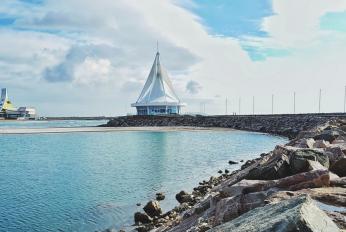 Национальный Доклад по выполнению Тегеранской Конвенции за 2019-2022 гг. (Туркменистан)Wed, 06/09/2023 - 19:38
Национальный Доклад по выполнению Тегеранской Конвенции за 2019-2022 гг. (Туркменистан)Wed, 06/09/2023 - 19:38
- Attached documents
- Metadata
- Year
- 2023
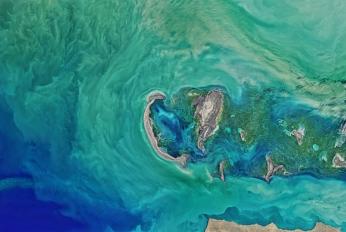 Caspian Environment Monitoring Programme - 2012Mon, 20/02/2023 - 14:41Unified, Integrated and Affordable Caspian Environment Monitoring Programme Among the Contracting Parties to the Framework Convention for the Protection of the Marine Environment of the Caspian Sea was welcomed at COP4, Moscow, Russian Federation, 10-12 December 2012. The objectives of the EMP to develop a framework providi
Caspian Environment Monitoring Programme - 2012Mon, 20/02/2023 - 14:41Unified, Integrated and Affordable Caspian Environment Monitoring Programme Among the Contracting Parties to the Framework Convention for the Protection of the Marine Environment of the Caspian Sea was welcomed at COP4, Moscow, Russian Federation, 10-12 December 2012. The objectives of the EMP to develop a framework providi
- Description
Unified, Integrated and Affordable Caspian Environment Monitoring Programme Among the Contracting Parties to the Framework Convention for the Protection of the Marine Environment of the Caspian Sea was welcomed at COP4, Moscow, Russian Federation, 10-12 December 2012.
The objectives of the EMP to develop a framework providing the necessary data and information on the Caspian environment in order to; initially provide data on the state of the Caspian environment, highlight pollution problems, provide biological related data which will support the broad objective of tracking changes of the health and diversity of ecosystems in, and adjacent to, the Caspian Sea.
- Attached documents
- Metadata
- Year
- 2012
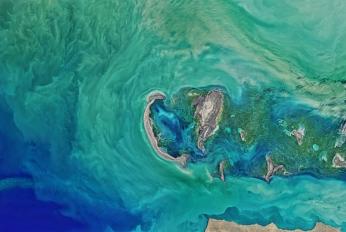 Draft Caspian Regional Action Plan on Marine LitterMon, 20/02/2023 - 12:33Marine litter, including plastic and microplastic, is a global concern affecting all the oceans and seas of the world. It poses environmental, economic, health and aesthetic problems that are rooted in poor solid waste management practices, lack of infrastructure, indiscriminate human activities and behaviours and an inadequ
Draft Caspian Regional Action Plan on Marine LitterMon, 20/02/2023 - 12:33Marine litter, including plastic and microplastic, is a global concern affecting all the oceans and seas of the world. It poses environmental, economic, health and aesthetic problems that are rooted in poor solid waste management practices, lack of infrastructure, indiscriminate human activities and behaviours and an inadequ
- Description
Marine litter, including plastic and microplastic, is a global concern affecting all the oceans and seas of the world. It poses environmental, economic, health and aesthetic problems that are rooted in poor solid waste management practices, lack of infrastructure, indiscriminate human activities and behaviours and an inadequate understanding on the part of the public of the potential consequences of their actions. Development of the Caspian Marine Litter Action Plan is embodied in the Moscow Protocol against pollution from land-based sources.
The preparation of the draft Caspian Regional Marine Litter Action Plan (CRMLAP) was undertaken by the national experts from the Caspian Sea littoral states and an international expert. For that purpose, five National Experts were contracted to provide their national inputs and contributions for the development of the Caspian Marine Litter Action Plan where the International Expert fully facilitates the development of the Caspian Marine Litter Action Plan.
- Attached documents
- Metadata
- Year
- 2020
 Информационный бюллетень о состоянии окружающей среды Республики КазахстанThu, 09/08/2018 - 13:34Информирование о состоянии окружающей среды на территории Республики Казахстан и оценка эффективности мероприятий в области охраны окружающей среды
Информационный бюллетень о состоянии окружающей среды Республики КазахстанThu, 09/08/2018 - 13:34Информирование о состоянии окружающей среды на территории Республики Казахстан и оценка эффективности мероприятий в области охраны окружающей среды- Description
Информирование о состоянии окружающей среды на территории Республики Казахстан и оценка эффективности мероприятий в области охраны окружающей среды
- Attached documents
- Metadata
- Year
- 2018
 Каспий теңізіндегі балықтардың паразитфаунасыThu, 09/08/2018 - 13:12Каспийй теңізінде ауланған балықтардың 15 түрін ихтиопатологиялық зерттеу нәтижелері бойынша Anisakidae тұқымдасы жататын Anisakis, Contracaecum,Porrocecum тоғышарларының жаппай таралуы анықталады.
Каспий теңізіндегі балықтардың паразитфаунасыThu, 09/08/2018 - 13:12Каспийй теңізінде ауланған балықтардың 15 түрін ихтиопатологиялық зерттеу нәтижелері бойынша Anisakidae тұқымдасы жататын Anisakis, Contracaecum,Porrocecum тоғышарларының жаппай таралуы анықталады.- Description
Каспийй теңізінде ауланған балықтардың 15 түрін ихтиопатологиялық зерттеу нәтижелері бойынша Anisakidae тұқымдасы жататын Anisakis, Contracaecum,Porrocecum тоғышарларының жаппай таралуы анықталады.
- Attached documents
- Metadata
- Year
- 2009
 The fifth report on implementation of the Convention on Biological Diversity in TurkmenistanWed, 18/07/2018 - 09:44The fifth report on implementation of the Convention on Biological Diversity in Turkmenistan presents the findings on the current stage and the situation of the biodiversity in Turkmenistan. It underlines the importance of the biodiversity preservation and highlights the main areas for work. Отчёт подготовлен при поддержке
The fifth report on implementation of the Convention on Biological Diversity in TurkmenistanWed, 18/07/2018 - 09:44The fifth report on implementation of the Convention on Biological Diversity in Turkmenistan presents the findings on the current stage and the situation of the biodiversity in Turkmenistan. It underlines the importance of the biodiversity preservation and highlights the main areas for work. Отчёт подготовлен при поддержке
- Description
The fifth report on implementation of the Convention on Biological Diversity in Turkmenistan presents the findings on the current stage and the situation of the biodiversity in Turkmenistan. It underlines the importance of the biodiversity preservation and highlights the main areas for work.
Отчёт подготовлен при поддержке совместного проекта Министерства охраны природы, Программы развития ООН в Туркменистане и Глобального экологического Фонда, «Планирование национального биоразнообразия в поддержку выполнения Конвенции по Биоразнообразию. Стратегический план Туркменистана на 2011-2020 гг.».
- Attached documents
- Metadata
- Year
- 2015
 Statistical Yearbook, Kazakhstan in 2011Mon, 09/07/2018 - 11:55Statistical data of the Republic of Kazakhstan
Statistical Yearbook, Kazakhstan in 2011Mon, 09/07/2018 - 11:55Statistical data of the Republic of Kazakhstan- Description
Statistical data of the Republic of Kazakhstan
- Attached documents
- Metadata
- Year
- 2011
 Загрязнение северной части Каспийского моряSun, 08/07/2018 - 23:18Экологическая ситуация Северной части Каспийского моря
Загрязнение северной части Каспийского моряSun, 08/07/2018 - 23:18Экологическая ситуация Северной части Каспийского моря- Description
Экологическая ситуация Северной части Каспийского моря
- Attached documents
- Metadata
- Year
- 2014
 Национальный доклад Республики Казахстан о выполнении по Тегеранской конвенции по защите морской среды Каспийского моря за 2017 годSun, 08/07/2018 - 23:06Обзор деятельности Казахстана по выполнению обязательств по Тегеранской конвенции
Национальный доклад Республики Казахстан о выполнении по Тегеранской конвенции по защите морской среды Каспийского моря за 2017 годSun, 08/07/2018 - 23:06Обзор деятельности Казахстана по выполнению обязательств по Тегеранской конвенции- Description
Обзор деятельности Казахстана по выполнению обязательств по Тегеранской конвенции
- Metadata
- Year
- 2017
 Информационный бюллетень о состоянии окружающей среды казахстанской части Каспийского моряSun, 08/07/2018 - 22:49Информирование о состоянии окружающей среды на территории Республики Казахстан и оценка эффективности мероприятий в области охраны окружающей среды
Информационный бюллетень о состоянии окружающей среды казахстанской части Каспийского моряSun, 08/07/2018 - 22:49Информирование о состоянии окружающей среды на территории Республики Казахстан и оценка эффективности мероприятий в области охраны окружающей среды- Description
Информирование о состоянии окружающей среды на территории Республики Казахстан и оценка эффективности мероприятий в области охраны окружающей среды
- Attached documents
- Metadata
- Year
- 2016
 Мониторинг геосферных процессов казахстанской части КаспияSun, 08/07/2018 - 22:22статья КазНУ Вестник
Мониторинг геосферных процессов казахстанской части КаспияSun, 08/07/2018 - 22:22статья КазНУ Вестник- Description
статья КазНУ Вестник
- Attached documents
- Metadata
- Year
- 2009
 О содержании нефтяных углеводородов в морской рыбе Каспийском акваторииSun, 08/07/2018 - 22:15статья КазНУ Вестник
О содержании нефтяных углеводородов в морской рыбе Каспийском акваторииSun, 08/07/2018 - 22:15статья КазНУ Вестник- Description
статья КазНУ Вестник
- Attached documents
- Metadata
- Year
- 2010
 "Оценка ледовых условий в казахстанском секторе Каспийского моря"Sun, 08/07/2018 - 22:08отчет Департамента "Зеленой экономики"
"Оценка ледовых условий в казахстанском секторе Каспийского моря"Sun, 08/07/2018 - 22:08отчет Департамента "Зеленой экономики"- Description
отчет Департамента "Зеленой экономики"
- Metadata
- Year
- 2012
Document
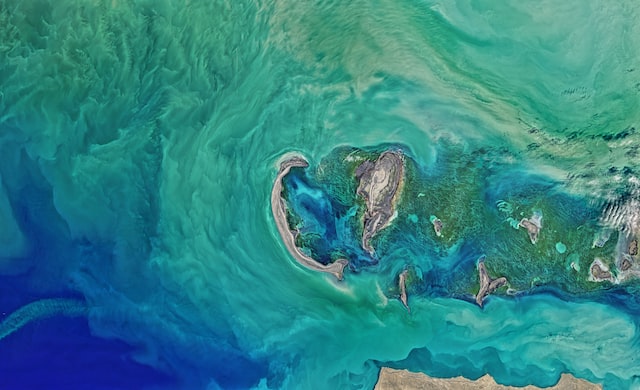
The interrelationship between the fisheries and the protection of the marine environment of the Caspian Sea
Document
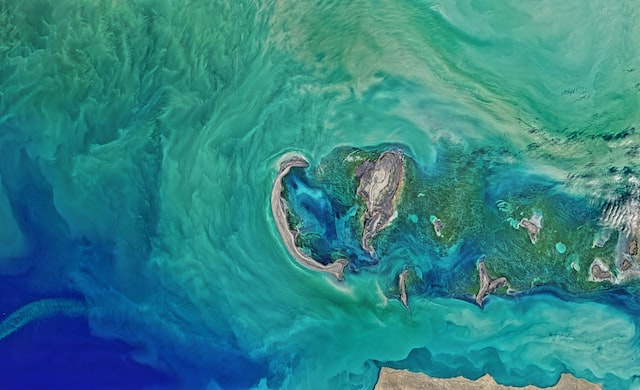
Threats to Biodiversity - Studies and findings of CEP II Studies
Document
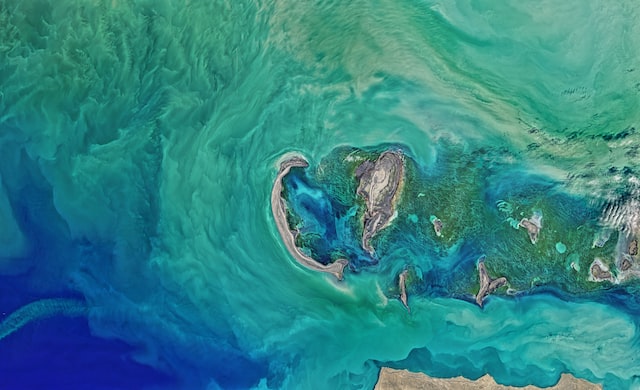
Casual Chain Analyses (CCA): Decline in tulka fishery
Document

Decline in Bioresources
Document

Caspian Sea Region: Environmental Issues
Document

Report: Marine Litter in the Caspian Sea, 2005
Document

Report: Fisheries Management in the Caspian Sea, 2006
Document

Национальный Доклад по выполнению Тегеранской Конвенции за 2019-2022 гг. (Туркменистан)
Document
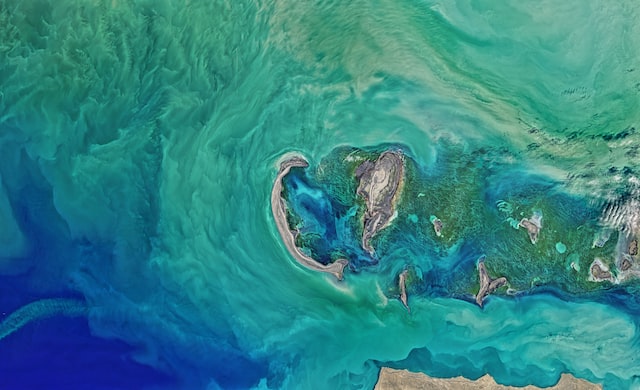
Caspian Environment Monitoring Programme - 2012
Document
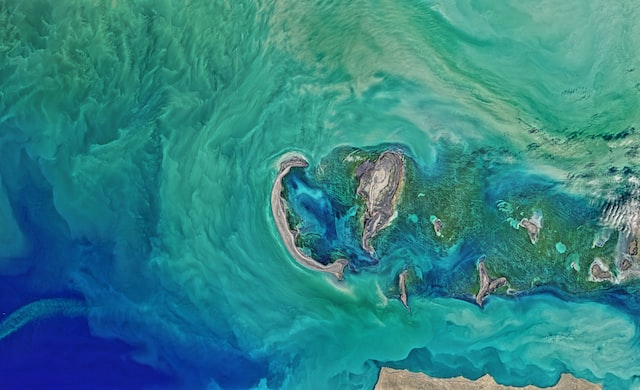
Draft Caspian Regional Action Plan on Marine Litter
Document
Информационный бюллетень о состоянии окружающей среды Республики Казахстан
Document
Каспий теңізіндегі балықтардың паразитфаунасы
Document

